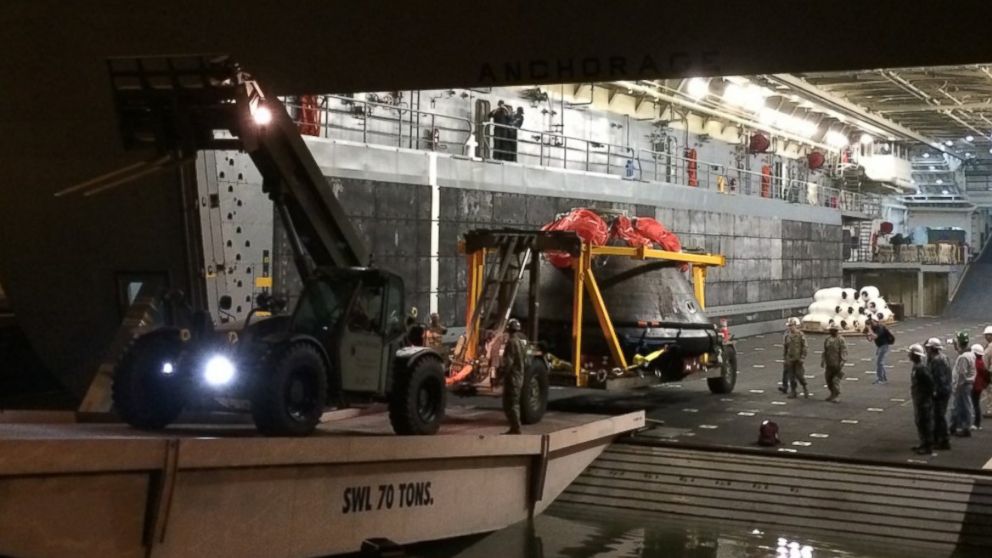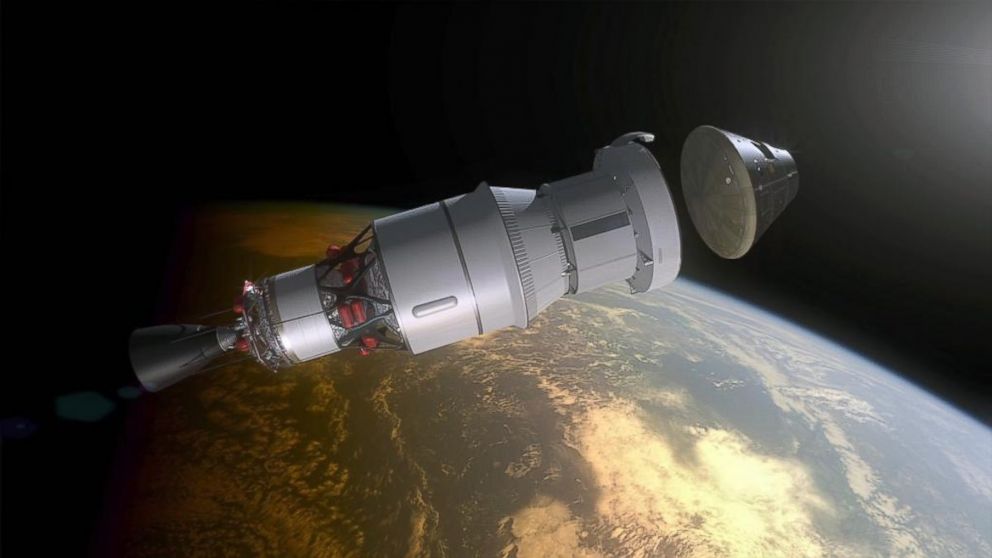What's Next For Orion: Cross Country Road Trip
After a flawless test flight, Orion is back on land in San Diego.

— -- Orion's maiden voyage was picture perfect, but the spacecraft isn't home just yet.
Next up for the capsule is a cross-country road trip from San Diego back to Kennedy Space Center in Florida, where engineers will gather more information on how Orion performed on its unmanned test mission.
The spacecraft, which has room for four astronauts, was unloaded from the USS Anchorage Monday night in San Diego. The Navy ship recovered and towed Orion from the point where it parachuted down into the Pacific Ocean on Friday.
At a briefing Friday, NASA said it had to get different permits for each of the states Orion will pass through when it is trucked 2,500 miles back to Florida.
Orion is expected to be back in time for Christmas, according to NASA, bringing with it a trove of data detailing what Orion experienced during its incredible 4.5 hour mission on Friday.

The space capsule passed a series of milestones, flying through the Van Allen radiation belts and even managing to send the first live video of the entire globe back to Earth since Apollo 17 in 1972.
The spacecraft, which could one day ferry astronauts to Mars, orbited Earth twice at an altitude of 3,600 miles before splashing down 600 miles southwest of San Diego at 11:29 a.m. ET.
The capsule plunged toward Earth at a speed of 20,000 mph and reaching temperatures twice as hot as molten lava. Engineers at NASA and Lockheed Martin gathered data that will be analyzed over the next few days, according to NASA.

A system of 11 parachutes deployed to help slow the capsule down to just 20 mph when it hit the surface of the Pacific Ocean.
The next step for Orion will be another launch to circle the Moon in 2018, then a manned mission to the Moon in 2020.




